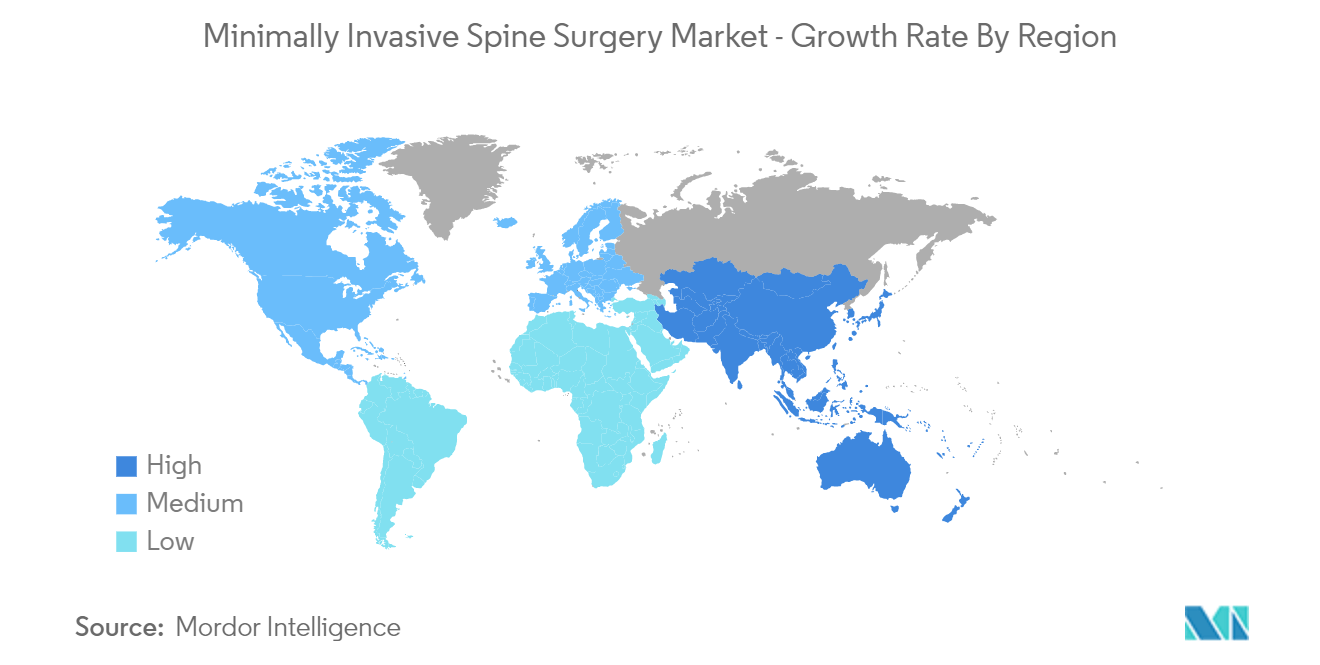Market Trends of Minimally Invasive Spine Surgery Industry
Biomaterial Segment is Expected to Witness Growth Over the Forecast Period
- Biomaterial refers to the biocompatible materials in the development of surgical devices and implants used in minimally invasive spine surgeries. It plays a crucial role in the development of devices and implants that are used to stabilize and support the spine, promote fusion between vertebrae, and enhance the healing process. Some common biomaterials include titanium alloys, stainless steel, polymers, and biologics.
- The strategic initiatives by market players, such as launches, partnerships, and collaboration, are expected to drive the segment's growth. For instance, in March 2023, Invibio Biomaterial Solutions launched the Peek-Optima Am filament, an implantable polyetheretherketone polymer for the manufacturing of 3D-printed medical devices, including spinal implants. Also, in December 2021, Spine Wave launched the Defender Anterior Cervical Plate and the Stronghold C 3D Titanium Interbody Device. The Defender Anterior Cervical Plate is made of titanium that provides fixation for anterior cervical fusion procedures. Hence, launches and adoption of advanced biomaterials are projected to boost the segment's growth.
- Furthermore, the research studies using biomaterial for the treatment of various spine surgeries also contribute to the market growth. For instance, in September 2022, DiFusion, Inc., a company engaged in biomaterial technological innovation focused on introducing bioactive polymers in spinal and orthopedic surgery, reported positive results from its retrospective study to determine if a bioactive interbody device reduced the time horizon for Spinal fusions using innovative biomaterial. The research studies are expected to create opportunities for developing an innovative product to fulfill the rising demand for innovations in biomaterials, which is expected to propel the segment's growth during the forecast period.
- Therefore, owing to factors such as rising demand for innovative biomaterials and its launches and research studies, the segment is expected to witness growth during the forecast period. Minimally invasive spine surgery is a type of surgery performed on the spine's bones. This surgery generally uses smaller incisions than traditional surgery and often causes less harm to nearby muscles and other tissues. This minimally invasive surgery can lead to less pain and faster recovery after surgery. The minimally invasive spine surgery market is segmented by product type (implants & instrumentation and biomaterials), application (fusion surgery and non-fusion surgery), treatment (lumbar disc herniation, thoracic disc herniation, spinal stenosis, degenerative spinal disease, and others), and geography (North America, Europe, Asia-Pacific, Middle East, and Africa, South America). The market report also covers the estimated market sizes and trends for 17 different countries across major regions globally.
- The report offers the value (in USD) for the above segments.

North America is Expected to Hold a Significant Share of the Minimally Invasive Spine Surgery Market Over the Forecast Period
- North America is expected to witness significant growth in the minimally invasive spine surgery market over the forecast period owing to factors such as the prevalent spine disorders and technological advancements in spine surgery devices.
- For instance, as per the National Spinal Cord Injury Statistical Centre data published in 2023, the annual incidence of traumatic spinal cord injury (tSCI) is approximately 54 cases per one million people in the United States, representing roughly 18,000 new tSCI cases each year. Spinal cord injury is associated with a high chance of damage to the delicate neural tissue, leading to neurological deficits and functional impairments, requiring minimally invasive spine surgery techniques to minimize tissue trauma and disruption. This is anticipated to boost the market growth.
- Furthermore, the developments by market players also contribute to the studied market growth during the forecast period. For instance, in August 2022, Nexus Spine launched the PressON posterior lumbar fixation system in the United States. Presson features rods that press onto pedicle screws rather than attach using set screws. This innovative design is around one-fourth the size of conventional systems, implants more quickly, is stronger biomechanically and enables the intraoperative creation of patient-specific rods. Also, in March 2022, Accelus completed a surgery that combined its Remi Robotic Navigation, LineSider Spinal System, and FlareHawk Expandable Interbody Fusion Device technologies in one procedure. Thus, the technological advancements in MISS products are likely to boost the demand for such products, which is expected to propel the market growth in the region during the forecast period.
- Therefore, owing to factors such as the high burden of spine disorders and rising launches by market players, the studied market is expected to witness growth in North America during the forecast period.


